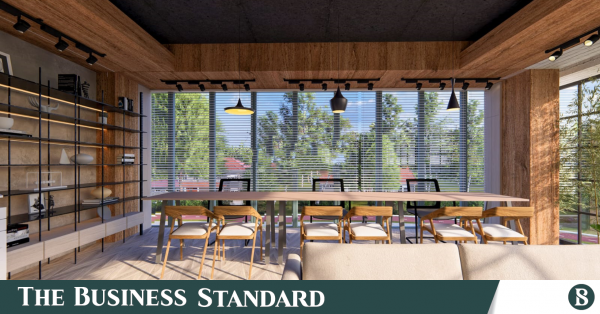From small budgets to funky design, with the right interior, small start-ups can be designed to function properly while also being the right place to brew new ideas.
Throughout the past decade, Bangladesh has seen an increasing number of start-ups. Usually hiring young employees, the interior of these start-ups need to be designed to not only fit the functional needs but also the psychological ones to be compatible with the mindset of the younger workforce.
Some differences with established businesses arise due to budget, demographic, and field; others, however, result from the changing landscape of the modern workspace. For the longest time, traditional office designs in Bangladesh looked very mundane and somewhat uninviting. But gradually, the scenario of office culture is changing with start-ups sprouting everywhere and companies becoming more and more adaptive.
Keep updated, follow The Business Standard’s Google news channel
Start-ups work with new ideas and require something new and thoughtful. Usually starting their journey with small budgets and compact teams, these offices are often designed very differently from established companies.
Mahmuda Alom Moon, founder and chief architect of THINK, opines that start-ups usually have very young employees ranging from 25 to 35. So, the designs are required to be compatible with that fact.
At first glance, what one might notice as different in the offices of the start-ups is the seating arrangement. Moon finds open-end seating very functional. “Usually having small budgets, some can only afford to buy seats and start with only one floor. This works best for them,” she explains.
With everyone sharing the same space, employees feel less isolated and more connected. This openness also promotes transparency, which, according to Rehnuma Tasnim Sheefa, principal architect at PARTI.studio, can indirectly help reduce workplace harassment.
Pods are really popular these days, as they give short-term privacy while still keeping things open and transparent. Besides pods, stickers, films, and coatings can create an etched-glass look — perfect for quick, impromptu meetings.
Rehnuma Tasnim Sheefa, Principal Architect, PARTI.studio
Learning from start-ups, more and more established companies are now adopting open-end seating as well. The layout allows for easier discussions and encourages collaboration, helping employees build stronger bonds. It also reduces the gossip culture often found in traditional offices and creates an environment where productive ideas can flow more freely.
Windows
Though very functional otherwise, one downside of small offices is claustrophobic feeling and the fear of being caged in. Proper ventilation and sunlight have been linked with psychological well-being in many studies.
Though not affordable for every company, windows should be installed if possible. It’s not just a decorative piece, rather they play a big role in maintaining the emotions and moods of the employees. Office work can feel like a lot, and windows that allow light and air in can help with productivity and reduce employee turnover.
Meeting rooms to monopods
Meetings can be a tricky thing to manage in start-ups. Also, with groups working together all the time, individuals with shorter attention spans can have impaired concentration. That’s when monopod workstations come into play.
Sheefa often recommends using monopods. “Pods are really popular these days, as they give short-term privacy while still keeping things open and transparent. Besides pods, stickers, films, and coatings can create an etched-glass look — perfect for quick, impromptu meetings,” she adds.
These methods are a simple way to balance privacy and teamwork, especially in a small office.
Colour
Another thing that influences productivity is colour. Colours in the interior should be done taking into consideration the brand, the stories it tells, and the messages it wants to communicate. Most start-ups prefer their interiors to match their logos.
The greyish and dark interiors of traditional corporate houses are rarely visible in start-ups. Funky, modern, and artistic designs are more expected. “Every company has a backstory. The interior should be a way of conveying their journey without using words,” says Moon.
Washrooms: The silent role of hygiene
A survey involving 1,206 full-time workers, conducted by the “International Interior Design Association”, indicated a significant link between office design and employee retention. Employees work long hours now, and hygiene is non-negotiable.
With more and more start-ups treating their employees like family and taking the well-being of employees seriously, washrooms are a crucial part now. “I have seen employees leave jobs because the washrooms were not clean,” says Moon.
Some companies are adopting gender-neutral washrooms, while others choose to keep them separate like traditional offices. Nonetheless, what matters the most is hygiene. The right ventilation is crucial to maintain a proper and usable washroom. Bathroom fans are a budget-friendly solution that takes little effort to install.
They are available for short or long extraction ducting, in surface-mounted or built-in versions, and in wall or ceiling versions. Any company with a small budget can afford them, making them perfect for start-ups. However, choosing the right fan and its positioning is what will ultimately decide how odourless and moisture-free the washroom is going to be.
Both Sheefa and Moon expect that more and more commercial buildings will follow safety codes and be more start-up friendly in the future.


